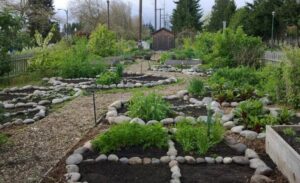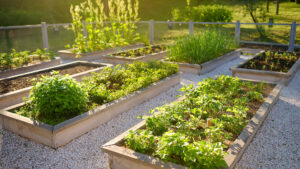
As more people become conscious of their environmental footprint, sustainable gardening has emerged as a transformative practice that not only benefits the planet but also enhances the beauty and productivity of your backyard. In 2024, integrating eco-friendly methods into your gardening routine is easier than ever. This guide outlines the top 10 sustainable gardening practices to help you create a greener, more efficient, and aesthetically pleasing backyard.
1. Native Plant Selection
Choosing native plants is one of the most impactful ways to promote sustainability in your garden. Native species are adapted to your local climate and soil conditions, which means they require less water, fertilizer, and pesticides compared to non-native varieties. These plants also support local wildlife, including pollinators like bees and butterflies.
Tip: Research the native plants for your region and incorporate a variety of species to ensure a diverse and resilient garden ecosystem.
2. Water Conservation Techniques
Watering efficiently is crucial for sustainable gardening. Implementing water-saving practices can significantly reduce your garden’s water usage and environmental impact. Consider using drip irrigation systems, which deliver water directly to the plant roots, minimizing evaporation and runoff. Rain barrels are another excellent option, allowing you to collect and reuse rainwater for irrigation.
Tip: Water your garden early in the morning or late in the evening to reduce evaporation and ensure deeper soil penetration.
3. Organic Gardening Practices
Organic gardening avoids synthetic chemicals and emphasizes the use of natural methods to nurture plants and manage pests. Organic compost, made from decomposed plant material, improves soil health and fertility. Biological pest control, such as introducing beneficial insects like ladybugs, helps manage pests without harmful chemicals.
Tip: Start a compost bin in your backyard to recycle kitchen scraps and garden waste into nutrient-rich compost.
4. Soil Health Management
Healthy soil is the foundation of a sustainable garden. Practices like mulching, cover cropping, and proper fertilization enhance soil structure and fertility. Mulch helps retain soil moisture, suppress weeds, and add organic matter as it decomposes. Cover crops, such as clover or rye, prevent soil erosion and improve soil nutrient levels.
Tip: Test your soil regularly to determine its pH and nutrient content, and amend it as needed based on the results.
5. Permaculture Principles
Permaculture is a design philosophy that mimics natural ecosystems to create sustainable and self-sufficient gardens. Principles of permaculture include creating closed-loop systems, using companion planting, and designing gardens that maximize energy efficiency. For example, planting nitrogen-fixing plants alongside your crops can naturally enrich the soil.
Tip: Observe the natural patterns in your local environment and incorporate them into your garden design for greater harmony and efficiency.
6. Seasonal Planting
Aligning your planting schedule with the seasons helps optimize plant growth and resource use. Choose crops that thrive in your region’s climate and adjust your planting times to take advantage of natural weather patterns. Seasonal planting reduces the need for artificial heating or cooling and can lead to higher yields.
Tip: Use a gardening calendar to track the best planting and harvesting times for your region’s climate.
7. Waste Reduction and Recycling
Sustainable gardening includes minimizing waste and recycling materials whenever possible. Use biodegradable pots and tools, and recycle old garden materials into new projects. For example, repurpose wooden pallets into garden beds or compost bins.
Tip: Create a garden journal to track your recycling efforts and find new ways to reduce waste in your gardening practices.
8. Wildlife-Friendly Gardens
Encouraging wildlife in your garden supports biodiversity and helps maintain a balanced ecosystem. Provide habitats such as birdhouses, bat boxes, and insect hotels to attract beneficial creatures. Avoid using harmful pesticides that can negatively impact wildlife populations.
Tip: Plant a mix of flowering plants and shrubs to offer food and shelter for a variety of wildlife species.
9. Energy-Efficient Gardening Tools
Using energy-efficient tools and equipment reduces the carbon footprint of your gardening activities. Opt for manual or battery-operated tools instead of gas-powered ones. Solar-powered lights can illuminate your garden without relying on electricity from non-renewable sources.
Tip: Maintain your gardening tools regularly to extend their lifespan and ensure they operate efficiently.
10. Community Involvement and Education
Participating in community gardening initiatives and educational programs can enhance your sustainability efforts. Join local gardening clubs or attend workshops to learn new techniques and share knowledge with others. Community gardens also provide opportunities to grow food collectively and foster a sense of shared responsibility for the environment.
Tip: Connect with local gardening groups and organizations to stay informed about sustainable practices and participate in community events.
Conclusion
Embracing sustainable gardening practices in 2024 is a rewarding way to contribute to environmental conservation while enjoying a vibrant and thriving backyard. By selecting native plants, conserving water, and employing organic methods, you can create a garden that benefits both you and the planet. Implementing these top 10 practices will not only transform your backyard into a greener space but also inspire others to follow suit in their gardening endeavors.

